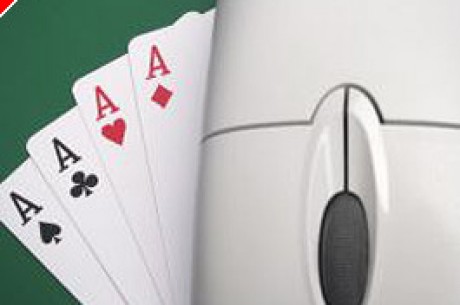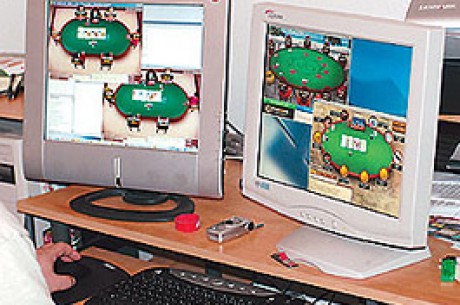The Other Games of Poker: Triple Draw Lowball

Successful cash game players understand that poker is a long-term grind. Hundreds of sessions, thousands of hands, millions of decisions. In the post-boom poker era, a strong majority of players are making their hourly rate almost exclusively at the hold'em tables. And while no-limit hold'em is still an incredibly profitable game, especially online, sometimes, well... it can get incredibly tedious just looking at two hole cards all day long. In the interest of breaking the monotony, we'd like to remind you that yes, there ARE games other than hold'em– weird, wild, wonderful poker variants like Badugi, Deuce-To-Seven, and Razz that will challenge a player to think outside the flop, turn and river. Transitioning from hold'em to any one of these more specialized games requires little more than a solid understanding of the rules, a few starting hand requirements, and some good poker sense. This week we'll take a look at the game that some call "crack for poker players" and Mike Matusow calls "a game for donkeys and morons"– triple draw lowball.
Rules
In the grand scheme of all things poker, triple draw is a relatively new game, only emerging over the last decade. In B&M casinos, it is primarily spread only in high-limit mixed games, however the low-limit games available online at Ultimate Bet, and now Poker Stars have opened triple draw up to players of any bankroll. True poker junkies love triple draw for it's wild action. It's a naturally shorthanded game where only 6 players maximum can be dealt in at once due to the amount of discards, and its four betting rounds can lead to huge pots.
Much like limit hold'em, triple draw is played in a two-tiered limit structure with a button, a small blind and a big blind. Five cards are dealt face down to each player– no upcards, no community cards. There are four betting rounds, one after the deal and one after each of the three draws, where players may either "stand pat" or discard anywhere from one to five cards and draw new ones in their quest to make the best low hand. After the second draw, the betting limit doubles.
Two variations of triple draw are played today; Ace-to-Five (A-5) and Deuce-to-Seven (2-7). In A-5 aces are low and straights and flushes do not count against you. In the more popular 2-7, the opposite is true. Your mission, should you choose to accept it, in 2-7 triple draw is to make the worst hand possible without hitting a straight or a flush. Pairs are bad, trips are even worse, and aces play high.
While in razz and in A-5 lowball an A-2-3-4-5 wheel is the nuts, 2-3-4-5-7 is the best possible hand in 2-7 triple draw. Not 2-3-4-5-6, that would be a straight. Many players new to triple draw tend to forget that and I've seen a shocking number of deuce to seven players turn over A-5 and 2-6 straights expecting to have the pot shipped their way, only to be totally shocked when their opponent takes the hand with a raggedy Jack low. After the 2-7 wheel, the next best low hands are 2-3-4-6-7, 2-3-5-6-7, and 2-4-5-6-7.
Starting Hands
Like Omaha, triple draw is a game of the nuts. Always be drawing to the nuts (2-3-4-5-7), or something close to it. Tight play is right, especially for a beginner, and one should rarely play a starting hand without a deuce in it.
Made hands (no need to draw)
Any five cards to a 7-low or an 8-low is an excellent deuce-to-seven hand. If you're lucky enough to pick up a hand like that after the deal, it's best to "stand pat" and stick with what you have, drawing no cards. 7-lows like 2-3-4-5-7, 2-3-4-6-7, 2-3-5-6-7, and 2-4-5-6-7 are premium hands and instead of trying to slowplay, you should be trying to get in as many bets and raises as you can against drawing opponents. A made 8-low or "pat 8" is also powerful. Hands with a 5-8, 6-8 or 7-8 low such as 2-3-4-5-8, 2-4-5-6-8, and 2-4-6-7-8 are all strong enough to stand pat. However, since your opponents will likely be drawing to some sort of 8-low, these hands are a bit more vulnerable than the monster pat sevens.
One card draws
Four cards to a 7 or 8-low that include a deuce or a trey are strong one-card drawing hands. The exception would be open-ended straight draws like 3-4-5-6 (only an 8 or higher could help this hand, as the 2 or 7 will fill the straight) or 4-5-6-7 (a 2 is the only way to improve, as a 3 or 8 fills this straight). Like in every other poker variant, draws to the nuts should be played aggressively, so think about jamming your 7-low draws like 2-3-4-7, 2-3-5-7 and 2-4-5-7. One card draws to an 8-low that do not contain straight possibilities are also strong draws to play aggressively, such as 2-3-4-8, 2-3-5-8, 2-4-5-8, 2-3-7-8 or 3-4-5-8.
Two card draws
Several two-card draws are also playable hands before the first draw. 2-3-4, 2-3-5, 2-3-7, 2-4-5, 2-4-7, and 2-5-7 are the strongest two-card draws (all drawing at a wheel). Two-card draws containing a 6, such as 2-3-6, 2-4-6 and 2-5-6 are also decent draws, but remember, the presence of the 6 in your hand means you are not drawing at the all-important nuts (the 2-3-4-5-7 wheel). Two-card draws to an 8-low like 2-3-8, 2-4-8 and 2-5-8 can also be worth playing, but are much more vulnerable hands. Think about playing these sort of draws from late position if no one has entered the pot before you, or from the blinds.
Three, four and five card draws? Only if you want to lose a lot of money. For even more information on deuce-to-seven starting hands, dust off your copy of Super/System 2 and check out the definitive work on the game, Daniel Negreanu's excellent triple draw chapter.
In a future installment of this column, we'll take a closer look at triple draw strategy as we go through each step of a hand with one of the game's experts. Until then, get out there and experiment at low limit triple draw for yourself. If you're anything like me, though, I have to warn you– addiction is imminent!
Ed note: You can find me, the guy behind all the 'Editor's Notes' at the Triple Draw tables of Ultimate Bet at least once or twice a week. Editor's Warning: You will get hooked.








